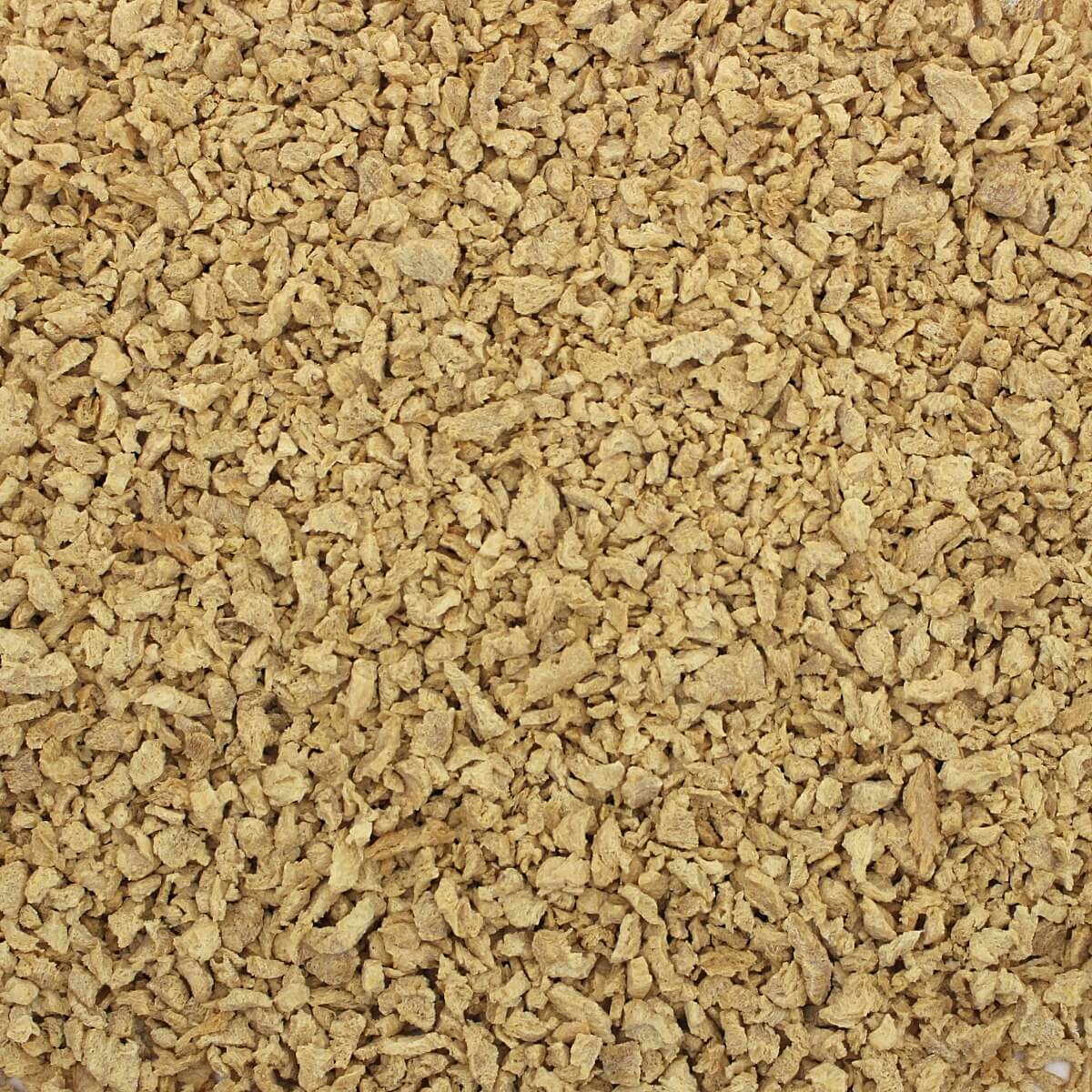
More people around the world are choosing plant-based and protein-rich diets, which is enforcing manufacturers to change the way they work. Textured vegetable protein (TVP) has become an important part of this shift. The plant-based food market is expected to grow to USD 77.8 billion by 2025, according to Statista.
For companies in the food industry, it is important to know about TVP's role, its benefits, and any possible downsides. In this article we help you understand what TVP is and how it affects the supply chain.
Textured vegetable protein, or TVP, is a meat substitute that is high in protein. It is, usually, made from soy flour that has had the fat removed, which comes from making soybean oil. TVP is made through a process called extrusion, where the flour is cooked under pressure and formed into small pieces like granules, chunks, or flakes. While soy is the most common ingredient, TVP can also be made from other beans like peas or fava beans for people who are allergic to soy or want to avoid it.
TVP is valued for its ability to take on flavors, its chewy texture that resembles meat, and its low cost, making it a useful protein option in many types of food. Furthermore, TVP needs to be soaked in water before you can use it. When combined with hot water it swells and takes on a texture suitable for various savory applications.
Textured Vegetable Protein (TVP) is a good source of plant protein. Here is its nutritional profile:
Some brands add B-vitamins or calcium to TVP to make it even more nutritious.
Most TVP (textured vegetable protein) comes from soy, which is an allergen in many places. Buyers need to make sure that allergen labels follow the food laws in the EU, U.S., and other areas. If there is a risk of allergens, there are soy-free TVP options made from peas or wheat.
In the U.S., TVP is considered Generally Recognized As Safe (GRAS) and meets food safety rules in the EU. Buyers should check that suppliers have certifications like ISO 22000, BRCGS, and other allergen controls.
When food ingredient buyers look for TVP (textured vegetable protein) suppliers, they should consider a few important factors. First, the protein content and form of the TVP should match how it will be used. For example, fine granules are good for sauces, while bigger pieces are better for stew mixes.
It's also important to know where and how the raw ingredients are processed so that the source can be tracked completely. Buyers should check that suppliers have the right certifications, like Non-GMO, Organic, Halal, Kosher, or Gluten-Free, especially for pea-based or special soy TVP.
TVP has several important benefits for food manufacturers. Its texture is similar to ground meat, making it a good substitute in many dishes. It soaks up spices and flavors well, which improves the taste of meals. Another big advantage is its long shelf life, making it ideal for bulk storage. TVP is also more affordable than animal protein while still offering high protein levels. It fits well into different recipes, including vegan, vegetarian, and mixed meat dishes.
TVP is very flexible and used in many types of food. It is popular in meat substitute products like burgers, kebabs, sausages, and meatballs, where it mimics the look and feel of ground meat. In ready meals, you can find TVP in dishes like chili, bolognese sauces, stews, and curries, providing good taste and nutrition.
Product developers often add TVP to vegan meal kits and easy-to-make mixes. In foodservice and catering, it helps create affordable recipes for large menus and quick meals. TVP is also found in snacks and foods with extra protein, like chips, bars, and crunchy bits that add texture and protein.
Because it rehydrates well and has a mild flavor, TVP works great for both traditional and new food ideas around the world.
Wholesale buyers looking for TVP in bulk should find manufacturers or trading platforms that focus on plant-based proteins. Working with wholesale TVP suppliers helps businesses save money, especially those expanding vegan and flexitarian products.
Nutrada matches buyers with reliable TVP suppliers worldwide. Visit our TVP supplier directory to explore qualified partners and request specific product options.
When buying textured vegetable protein in bulk, it's important to check minimum order amounts, storage and handling requirements, and shipping details. Nutrada makes this easier by providing access to trusted wholesale TVP suppliers around the world.
What does TVP stand for?
TVP stands for textured vegetable protein.
Is textured vegetable protein healthy?
Yes. TVP is low in fat and high in protein and fiber. It does not contain cholesterol. When used wisely and combined with whole foods, it can help create a balanced diet.
Is TVP always made from soy?
No. While most texturized vegetable protein (TVP) comes from soy, there are options made from peas, wheat, and other legumes. These alternatives help meet allergen-free or soy-free needs.
Can TVP fully replace meat?
Yes. TVP can be used in many dishes like tacos, chili, burgers, and pasta sauces. It can replace or stretch ground meat, helping to lower costs and extend shelf life.